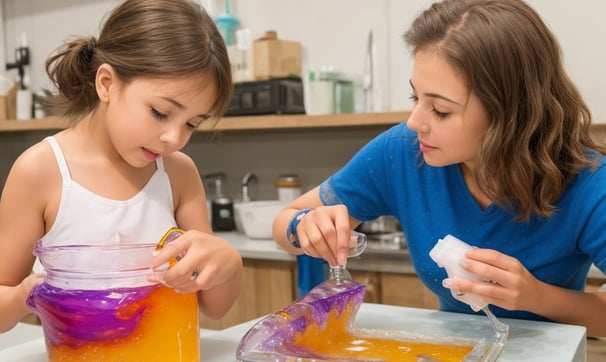Mixing Glues: A Sticky Situation or a Stroke of Genius?
GLUE COMPATIBILITY


This blog post explores the concept of mixing different types of adhesives, discussing potential benefits, considerations, and creative applications while emphasizing the importance of caution, compatibility, and testing.
Mixing Glues: A Sticky Situation or a Stroke of Genius?
The world of adhesives offers a wide array of options, each with its unique properties and applications. But what happens when you mix different kinds of glues? In this blog post, we'll explore the curious art and science of blending adhesives and whether it's a smart solution or a recipe for a sticky situation.
Understanding Adhesive Types:
Before we dive into mixing, it's essential to understand the characteristics of different adhesives:
Cyanoacrylate (Super Glue): Known for its fast bonding and excellent strength on various materials.
Epoxy: Provides high bonding strength, durability, and resistance to heat and chemicals.
Polyurethane: Offers flexibility and excellent resistance to water and impact.
PVA (Wood Glue): Ideal for porous materials like wood, it forms strong and durable bonds.
Silicone: Known for its flexibility, waterproof properties, and resistance to extreme temperatures.
Mixing Adhesives:
While some adhesives can be mixed to achieve specific properties, it's crucial to do so with care and purpose:
Enhancing Properties: Mixing different adhesives can potentially improve certain characteristics, such as flexibility, heat resistance, or curing time.
Compatibility Matters: Ensure that the adhesives you're mixing are chemically compatible. Some combinations may result in undesirable reactions or reduced effectiveness.
Testing is Key: Before using a mixed adhesive in a critical application, conduct tests on scrap materials to evaluate its performance and suitability.
Common Mixes:
Epoxy Resin and Fillers: Adding fillers like wood dust, microballoons, or fiberglass to epoxy can enhance strength and create specific textures.
Polyurethane and Epoxy: This combination can result in an adhesive with good flexibility and high strength.
Cyanoacrylate and Baking Soda: Mixing super glue (cyanoacrylate) with baking soda can create a quick-drying, strong, and gap-filling adhesive.
DIY Projects and Creative Applications:
Mixing adhesives can be particularly useful in crafting and DIY projects where custom properties are needed. Whether you're creating sculptures, jewelry, or custom tools, experimenting with adhesive blends can lead to innovative solutions.
Cautions and Limitations:
Chemical Reactions: Some adhesive combinations may lead to undesirable chemical reactions, reducing bonding strength or causing curing issues.
Testing First: Always test any adhesive mix on a small, inconspicuous area to ensure it meets your expectations.
Safety: Use adhesives in a well-ventilated area, wear appropriate protective gear, and follow safety guidelines provided by manufacturers.
Conclusion: Crafting with Caution and Creativity:
Mixing different kinds of glues can be a creative and practical endeavor, offering custom solutions for specific applications. However, it's crucial to approach adhesive blending with caution, ensuring compatibility and conducting thorough testing to achieve the desired results. With the right knowledge and experimentation, you can explore the fascinating world of adhesive combinations and uncover innovative possibilities for your projects.
